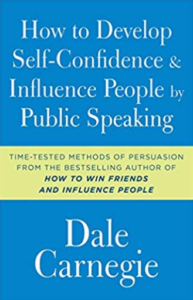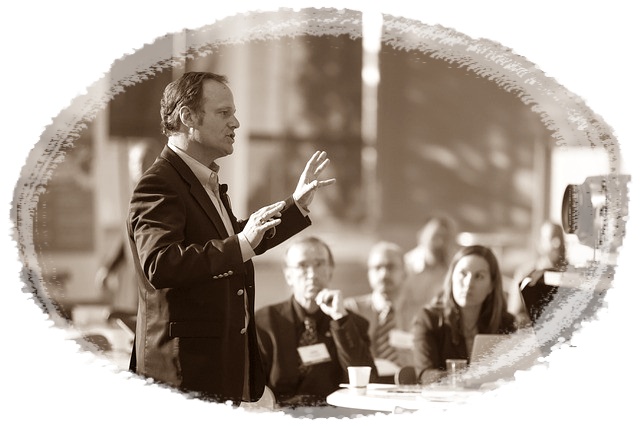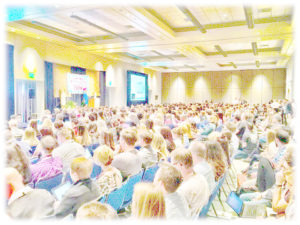Table of Contents
Ever wondered what Public Speaking is really about? The best way to convey what it is about is through math, simple math… don’t worry it’s easy.
I had the “pleasure” of attending a public speaking event last week and I literally wanted to scream.
The speaker bored me to tears with his monotonous tone and lack of any communication skills, never mind emotional intelligence.
It was a huge unfulfilled opportunity that entirely missed the point, one that certainly disregarded the fact that the stakeholders were the audience.
This person will never know what they missed because all they got at the end of 45 minutes were polite applause that faded away within 2 seconds.
The kind of applause that said “thanks for releasing us from this painful experience”.
What he missed was enthusiastic energy from an emotionally and mentally satisfied audience that would have uplifted him to the next level of public speaking.
That’s what happens when you get on the “train” of public speaking excellence…you move from success to success.
You don’t want to be that speaker, do you?
I hope in this article to convey to you what public speaking is about, certainly as a leadership communication skill, along with some vital tips, so you won’t miss your opportunities.
Here is the math:
You have one speaker, a message, and as many listeners as there are, whether present in a room or through other forms of media.
So one message reaches as many as are tuned in…that’s the math! Easy – right?
That makes public speaking a powerful communication tool that can influence many people, positively or negatively, if it has the versatility and art to make its way to the hearts and minds of people.
Another aspect…The positive energy makes a huge difference because it can cause your audience to share your message with many others even if they didn’t hear you…and that can work exponentially because people love to share their satisfaction.
Planting “Positive Emotional Viruses” Through Public Speaking
When it comes to public speaking as part of leadership communication skills it is important to have the view that it is an opportunity for the leader to change the culture of their organization.
Or, as the jargon of today goes: “to make it go viral” by planting “positive emotional viruses” in people…because that’s exactly what they are.
People can be infected and are with the emotions of others. I am sure you know that but you never called it emotional viruses
This dimension of EQ in public speaking is extremely effective when it’s done right and can cause many dynamic results such as:
- Building trust
- Demonstrating support
- Inspiring & motivating
- Rallying the “troops” behind a cause by the demonstration of appreciation to their contribution
- Focusing mind & hearts on a purpose
For those and other reasons, Public speaking is a crucial leadership skill that often can define the style of leadership.
Aligning Your verbal and Nonverbal Communication
Studies show that the significance of words in public speaking accounts for only 7 to 10 percent of the total message. Think about how much people focus on the content of their message and how little on how they say it. It is bizarre and is completely upside down to reality.
It is critical to train in a way that verbal and nonverbal communication is in alignment to achieve maximum influence. In other words, your tone of voice and body language need to empower the words you speak so that both hemispheres of the brains of the listeners get the message.
It would be weird, wouldn’t it, for a leader to start their speech with “good morning” that has no feeling of good morning in their words…and haven’t heard it kazillion times?
BTW, tone of voice and body language account for over 90% of the power in public speaking!
The Art Of Public Speaking
What makes public speaking an art is the ability to pay attention to details and learn to fine-tune each message in a way that makes a maximum impact on the intended audience.
It begins by thinking about public speaking as an original ‘out of the box’ opportun ity to reach your audience, differently, every single time.
ity to reach your audience, differently, every single time.
An opportunity that celebrates the marvels of communication, where one can enrich many people with unique content, form, and emotional intelligence, which was specially crafted to uplift their minds and emotions.
“Live speak” is to make a public speaking opportunity a dynamic and a live occasion by making each moment a conscious experience for the audience, rather than a boring, repetitive, lackluster, “I wish I wasn’t there” occasion.
A powerful message that lets the power of now be expressed through the art of communication.
Reading or learning a pre-written speech is fine but if it isn’t live and original it only echoes the past and thus has a minimal effect on listeners.
By the way, it is easy to tell if a speech is live or just a “rehearsed clip”…you feel it.
Public speaking should entail, first and foremost, an inner commitment and conviction by the speaker that sees themselves to be an agency of good things for people, through public speaking.
In other words, they tell others what they would tell themselves.
It has to be intimate, with emotional appeal, as if you have each one of the many people listening to you, seating with you in your kitchen table one-on-one.
People want to feel important and valued and that has to be in your message regardless of what you say….if you want public speaking to be an art.

The Big Picture Of Public Speaking As Team Building Tool
How can anyone think that they can build cohesive teams without excelling in communication? unfortunately, many leaders do. They don’t connect teamwork with communication.
The big picture of public speaking is marvelous. but to see it you need to believe in it first, and to believe in it you need to convince yourself with some facts.
The best way to see the big picture is to ask open-ended strategic questions and then conduct a think tank around these questions (one of my expertise in leadership training)
Here are 6 Strategic Questions that will help you find the big picture of public speaking;
- What is the significance of communication skills in our times?
- What is the significance of public speaking as a communication skill? in the context of leadership?
- What is the significance of the artful level of public speaking as part of leadership communication?
- What are the absolutely necessary components to make public speaking an empowering tool for leadership communication?
- What is Strategic communication and how does it impact public speaking?
- How to think about team building in the context of public speaking as a leadership communication skill?
The big picture will start to reveal itself through a think tank that will pivot around these questions. Obviously to get to the bottom of this in a thorough and meaningful way a series of leadership training seminars will be required.
However, in this article, I will try to summarize for you the public speaking skills for leadership communication, in particular.
What Is Strategic Communication
It is necessary to become familiarized with the term “strategic communication”, which combines together strategic thinking and communication, which makes public speaking a specific and targeted leadership communication skill, designed to reach the audience’s needs and create maximum impact.
The question is, can you as a speaker come alive with your audience and make your speech exciting, informative and capturing, even if the topic is known or old?
Are you able to inject new life into your words each and every time?
Because, if you do, you are using high impact strategic communication.
It is extremely important to know exactly what you as the speaker, want to achieve in your public speaking event and to hold that in your mind throughout the presentation, in words and picture forms.
For example, if you as a leader want to inspire people, you would need to hold that notion in your mind with a relevant picture that sees people happy, for example, and translate this word/picture combination in your head to a choice of words, tone of voice and body language.
Here is the thing…you do it any way but not consciously so any picture and any thought can sneak up on you and ambush your message.
Words alone have minimal impact because people don’t have retention for words but they do have retention for the way you make them feel – that is called emotional intelligence communication skills and that has to be strategic.
7 Steps to Effective Public Speaking

#1 – The Message Behind the Message:
It is extremely important to be empowered by the power of positivity in your communication message because that’s what people will receive when you speak.
They’ll hear the words but will feel what you have in mind when you speak these words.
Words convey energy and you decide what that energy will be.
The motive that hides behind the spoken word is always the Influencing Energy of the word.
#2 – Content Vs. Form:
The correct balance of form and content of a message, or, the balance of verbal and nonverbal communication, is critical to its level of effectiveness.
communication, is critical to its level of effectiveness.
The form is the “delivery package”, which demonstrates the meaning of what is positive body language and how it impacts a message.
It is to do with the speed of the spoken word, the pauses between the words, the facial gesticulation, the intonation, and the tone of voice.
The content is the choice of words and the level of language used in balance with EQ which increases the level of retention.
#3 – Overcome the fear in public speaking:
You can be well prepared and rehearse a speech in a meticulous way but to use public speaking as effective leadership communication skills you need more.
way but to use public speaking as effective leadership communication skills you need more.
When you are in front of your audience everything changes.
You are now dealing with a different dynamic, which includes the presence of others, their collective energy, their fears, their hopes, their wishes and wants, and expectations, which are mostly hidden.
All of these elements were not present when you prepared the speech in the comfort of your home, but you are now facing them.
This causes fear! You now feel the pressure. It can cause you to speed up through the talk, become nervous, incoherent and lose your audience.
What you need is mental toughness to resist the pressure. You need to slow down, smile and proceed with the talk as if you are speaking to ONE PERSON IN YOUR LIVING ROOM. Hold that image in your head.
You find mental toughness by connecting deep to yourself, which is achieved by deliberately slowing down.
You need to be attentive to your audience and be ready to respond in a live fashion to what fits the most, even if it means deviating from your original speech.
Learn to work live when needed and respond to the needs of the moment, and again…smiling… It helps to reduce the internal pressure and deliver a message to your audience “I am in control and… I am a human”.
This what you must strategically prepare for rather than just rehearsing the message.
#4 – Choice Of Words That move & motivate people:
A language that doesn’t have emotional intelligence appeal will bore people.
What is a language that moves people? It is the language that uses emotional words and inserts feelings into selected words.
The E-motion, which is Motion of E (energy, is a powerful energizing leadership communication skill that can ‘move mountains’, and inspire people through public speaking.
The words then become a vehicle for essences and presences that MOVE people emotionally and transfer to them the feelings and passion that motivate them. This is what motivation is about.
#5 – Your Audience is Your Stakeholder- Make Them feel Important:
Effective communication is one that gets  the message across in a clear and powerful way that is not easily forgotten.
the message across in a clear and powerful way that is not easily forgotten.
It is important to keep in mind the principle that your listener is the stakeholder.
The speaker has to figure out the style of communication that appeals to the audience.
If the listener doesn’t “get it”, then the message was ineffective.
Therefore, in public speaking, and particularly, leadership communication skills, it is important to develop a holistic sensitivity to the needs of your audience and be there for them, as the stakeholders.
People want to feel important, and they are. Give them that feeling!
#6 – Storytelling & Analogies:
Make sure that part of your leadership communication skills includes the art of storytelling and the use of analogies.
People love stories, when you tell stories you connect your audience to the child in them, the one that loves stories.
It is much easier to communicate effectively when people are connected to the softer part of them, which is their childhood.
#7 – Stand Out By Being Extraordinary:
Make an impact – People remember the extraordinary…so be extraordinary, stand out!
That attitude to have is that every public speaking occasion as an opportunity to improve your leadership communication skills.
Finally
This article merely touches on leadership communication skills that are vital to public speaking.
To truly make an impact as a public speaker you need to rise up above the monotonous and the mundane.
Every speaking occasion is a TEAM BUILDING opportunity with your audience if you know what you are doing.
The tips I gave in this article can make a huge difference for you. But you need the training and workshop experience in a professional setting so that you can feel their real impact.
You need to acquire the tools that you need to make that impact.
This will show how great the effect is in small improvements that can be made in public speaking and how vital it is to leadership communication skills.
The Thinking Coach Leadership Training Courses, Management Training Courses, and Employee Training Development
These are some of the best ROI programs for your organization, bar none!
I am a leader and communication specialist.
I will help your organization develop effective communication for the workplace. This will make the environment healthy and productive in ways that are hard to imagine.
Yes, communication!
Public speaking, as leadership communication skills, is work-shopped extensively in my leadership training programs.
It gives people tools that if they apply will open doors for them they never imagine.
So much is possible through the art of communication!
Eli Harari The Life Coach for Professionals™![]()
Photographs by Pexels, Pixabay, Unsplash


Pingback: The Effectiveness Of Strategic Communication-10 do's & dont's Part 1